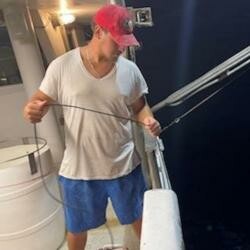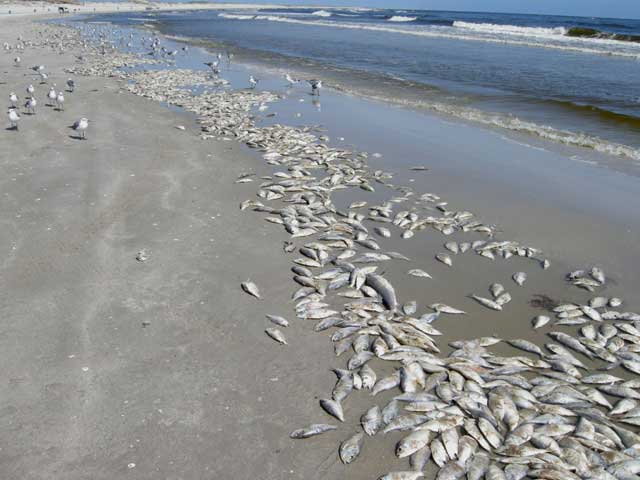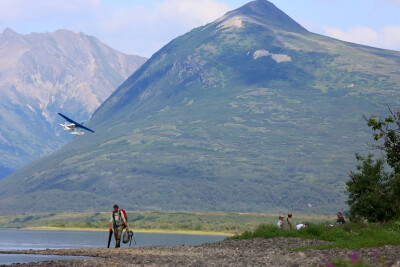Another eruption of red tide on the southwest Florida coast has brought fish kills and public health advisories to beaches, and commercial fishermen are pitching in the help scientists map out the effects.
Fishermen who work offshore of the Tampa Bay region are providing oceanographic data to NMFS’ Southeast Fisheries Science Center, as part of the center’s ongoing collaboration with the Florida Commercial Watermen’s Conservation.
The non-profit group is dedicated to science-based water quality testing and marine stewardship, founded and operated by commercial fishermen in response to devastating red tide blooms of the last five years.
The group trains and outfit fishermen with water monitoring kits, for its mission ‘to quantify the environmental and oceanographic conditions before, during, and after red tide blooms to better understand their dynamics and provide timely decision-support to increase the resilience of fishermen and fishing communities on the west coast of Florida to red tide events.”
The group got its start with outbreaks that culminated in a widespread 2018 algae bloom that extended far, said fisherman and organizer Casey Streeter of Matlacha, Fla.
“It just wiped out our fisheries completely…the red tide went way offshore,” said Streeter. The Southeast science center was seeking information on what effects fishermen had seen on red grouper, and Streeter said he contacted Mandy Karnauskas, a research fishery biologist at the center.
That led to a meeting between fishermen and biologists, and “they had more questions than we had answers,” Streeter recalls. That led to fishermen joining on a research trip.
“They were blown away, and we were blown away by the dead bottom,” said Streeter.
Florida Commercial Watermen’s Conservation got organized and raised $50,000 in southwest Florida coastal communities to buy testing equipment.
Monitoring water quality benefits the broader coastal economy, and in the long term fisheries management, said Streeter. Data from red tide effects offshore have been very valuable for gauging impact on red grouper, and “saved us some fish” when managers set limits, he said.
“Fishermen are just the front line,” said Streeter. Scientists “want us to get this information because they know we are the boots on the water.”

NMFS officials say the fishermen’s data will help the agency plan research activities and choose the best locations to focus those efforts.
“As we collect more data, these offshore observations will be important in understanding the impacts on managed species,” according to an agency statement. “The observations will provide key information that could be used by the fishing community to mitigate the impact of these events.”
Red tides are difficult to track because they often occur as multiple, shifting algae blooms along the Florida coast and its estuaries. Most recently the Tampa Bay outbreak seems to be fading, but high concentrations of red tide continue off Manatee and Sarasota counties.
Fishermen who transit those areas while fishing for stone crab, mullet and red grouper are often the first to notice blooms. Equipped with monitoring kits, fishermen can record data on temperature, salinity, oxygen concentrations and other physical characteristics, all “necessary information for forecasting bloom behavior. It also helps us to gather data faster and has been crucial in filling information gaps between research missions,” according to NMFS.
Mounting agency research cruises involve expense and complex planning that has been hobbled by covid-19 safety precautions, so fishermen’s data is valuable in filling those gaps in real time.
NMFS workers interviewed fishermen about the impact of the severe 2018 red tide events and are looking to do the same this year.
“We are interested in hearing from the fishing community this year, too. We want to understand what issues and concerns they have and what they are seeing when they are out on the water,” according to the agency. “We also want to know what sort of information would help their businesses survive these difficult times.”
Fishermen who want to share their observations about red tide can contact Matt McPherson at (305) 365-4112 or Mandy Karnauskas at (305) 361-4592. .







